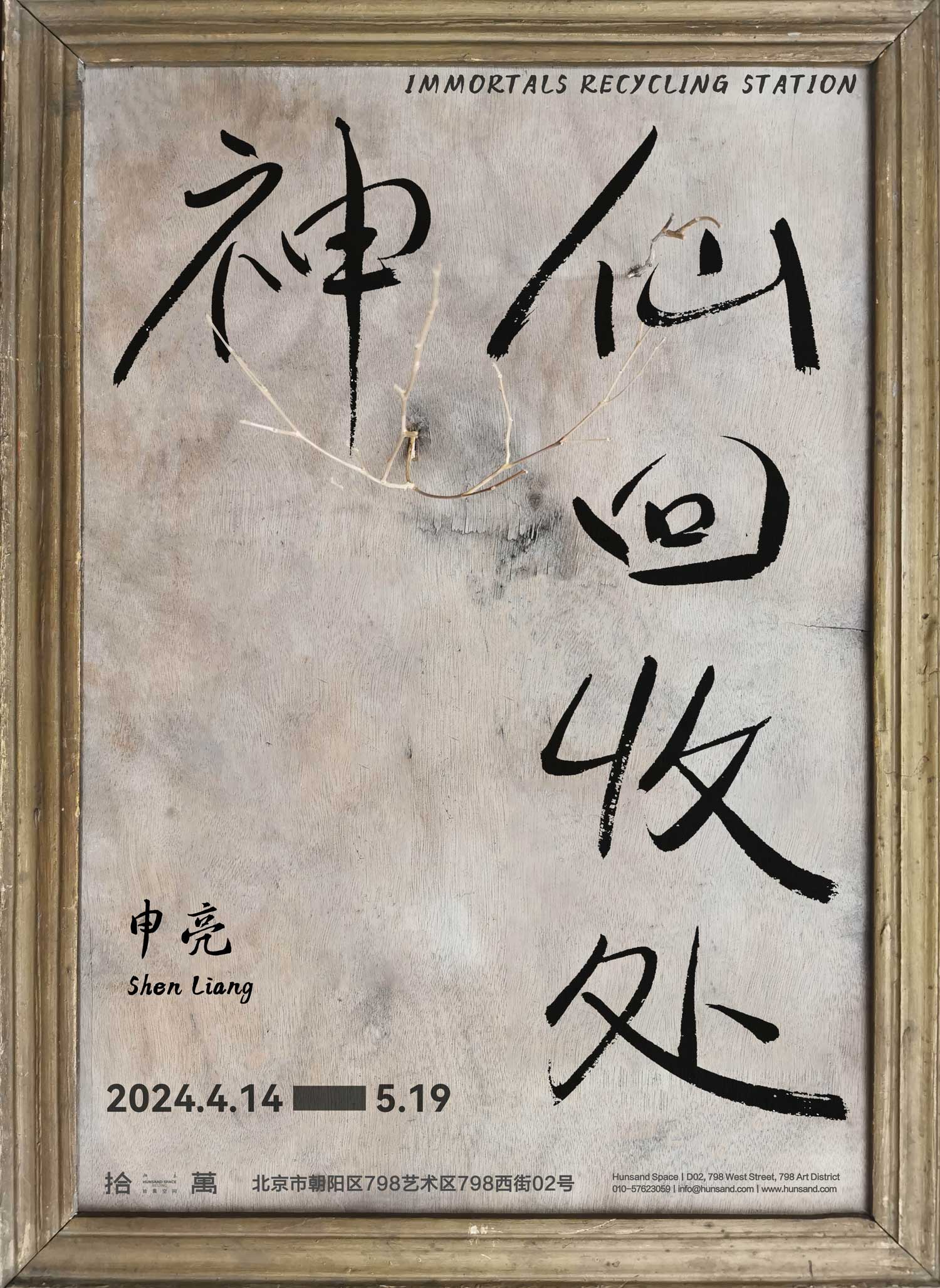展期 Period:
2024.4.14—2024.5.19
艺术家 Artist:
地点 Venue:
新闻稿 Press Release:
拾萬空间(北京)非常荣幸地将于2024年4月14日呈现申亮的个展《神仙回收处》。本次展览是申亮近三年的艺术实践,共展出约三百余件绘画和装置作品。
本次展览有三个系列的作品,系列一为《画书计划》。申亮早期画过一批以旧书封面为题材的布上油画,被大家熟知的是西游记系列,但这个阶段的《画书计划》相比较之前的系列,形式更加丰富和生动,此系列的开始动机是申亮想找一些老纸去临摹古画,老纸不好找,直到有一天申亮发现老的书本,因为色泽、质地和年代的不同,附着在老书上的历史感和时间感就完全不一样。这像打开了一扇神奇的大门,申亮从开始临摹古画书的封底,到因地制宜的根据书本尺寸和内容的不同开始了肆意的篡改,种种的幽默化的调侃、反讽和戏虐的语言态度解放了申亮在布面上的所有限制,面对老书能瞬间性的创作,这种久违的荷尔蒙式的喷发而出的作品,它真实有趣,没有半点的虚假和掩饰。
系列二为《亮,到此一游》,申亮一直有收藏古器物和看古建筑的爱好和习惯,面对这些屹立多年的古建筑,似乎有一种很远的东西在说话,这个在说话的东西可能是落在建筑上的一只鸽子,也可能是墙角下的一只猫,也或许是力士脚上的小狗,总之,这个很远的声音一直在,人们供奉的各类神仙佛像也很近,近的如随手用的水杯。错综的时空交错感,迷离的情感交叉,让申亮动意了,要记录下这错综的时空和阵阵的穿越感,话说不明白,但是画能说明。
系列三为《神仙回收处》,也是本次个展的名字来源。申亮两年前从咸鱼上收了二百多个老的旧镜框,这些老镜框千奇百怪,有浓厚的时间和情感包浆。这些包浆让申亮产生了变废为宝的想法,“应物像形”的物的前提已经有了,这给了申亮巨大的创作自由,拆框子,看框子,根据框子的不同纹饰机理来画一些自己平时积累了很多的想画而未画的内容。用什么图像,选什么框子,什么手法去画这些看似要想一下的决定,基本在一瞬间就被申亮给决定了。内容想到什么画什么,什么入画就画什么,这些老镜框像一个图像回收站一样,无论是高大上还是低矮矬都可以无差别的进入到这些老镜框中,很沸腾,很刺激,很真实。
以上三个系列共三百余件的作品体量,让绘画这个动作变成了一切。
HunsandSpace (Beijing) is honored to present the solo exhibition titled "ImmortalsRecycling Station" by the artist Shen Liang on April 14th, 2024. This exhibition showcases nearly three hundred paintings and installation works representing Shen Liang's artistic practice over the past three years.
This exhibition features three series of works, with Series One titled 'The Book Painting Project'.In his earlier period, Shen Liang painted a collection of oil-on-canvas pieces that were themed around vintage book covers, with his Journey to the West series being widely recognized by the public. However, in this phase of 'The Book Painting Project,' compared to previous series, the forms and expressions have become more diverse and vivid. The impetus for this particular series stemmed from Shen Liang's search for old paper to copy ancient paintings; due to the scarcity of such paper, he stumbled upon old books one day. The unique colors, textures, and age of these books imparted a sense of history and time quite unlike any other. It was as if he had unlocked a magical door. Shen Liang began by copying the back covers of oldillustrated books, and eventually, taking advantage of the varying sizes and contents of the books, he moved on to creatively altering them in a way that was both site-specific and whimsical. The use of humor, satire, and playful language in his work broke free from all constraints on the canvas. When confronted with old books, Shen Liang was able to create spontaneously, resulting in works that burst forth like long-absent hormonal outbursts—raw, genuine, and utterly without pretense or disguise.
In Series Two, titled "Liang's Sojourn",Shen Liang has long been an enthusiast with a penchant for collecting antique artifacts and admiring ancient architecture. When confronted with these centuries-old structures, there appears to be a distant voice speaking—a voice that might manifest as a pigeon perched atop the edifice, a cat nestled in a corner, or perhaps a small dog resting at the foot of a statue. This elusive yet persistent voice echoes through time, while the divine figures worshipped by people stand equally close, as tangible as a water cup at one's fingertips. The intricate web of intertwined time and space, coupled with a hazy blend of emotions, moved Shen Liang to capture this labyrinthine chronotope and the resonating sense of time-travel within his work. Where words may falter to articulate, art speaks volumes.
Series Three is titled 'The Immortals Recycling Station', which also serves as the origin for the name of this solo exhibition. Two years ago, Shen Liang acquired over two hundred vintage picture frames through an online platform akin to a secondhand marketplace (referred to as "Xianyu"). These frames were eclectic, each carrying a rich patina of time and emotion. This very patina inspired Shen Liang with the idea of transforming discarded items into treasures. With the material premise of "responding to objects and depicting their shapes" now in place, Shen Liang was granted immense creative freedom. He started dismantling the frames, examining them closely, and basing his paintings on the distinctive patterns and textures found within each frame. Decisions about what images to use, which frames to select, and what techniques to apply—choices that might seem to require deliberation—were typically made by Shen Liang in a flash. He painted whatever content came to mind, whatever resonated with the frames, allowing everything he'd long wanted to paint but hadn't to find its place within these antique borders. The vintage frames served as a sort of image recycling depot, indiscriminately welcoming highbrow and lowbrow subjects alike. The process was invigorating, thrilling, and deeply authentic.
The combined body of work consisting of over three hundred pieces across these three series is so substantial that it elevates the act of painting to become the very essence of everything.

